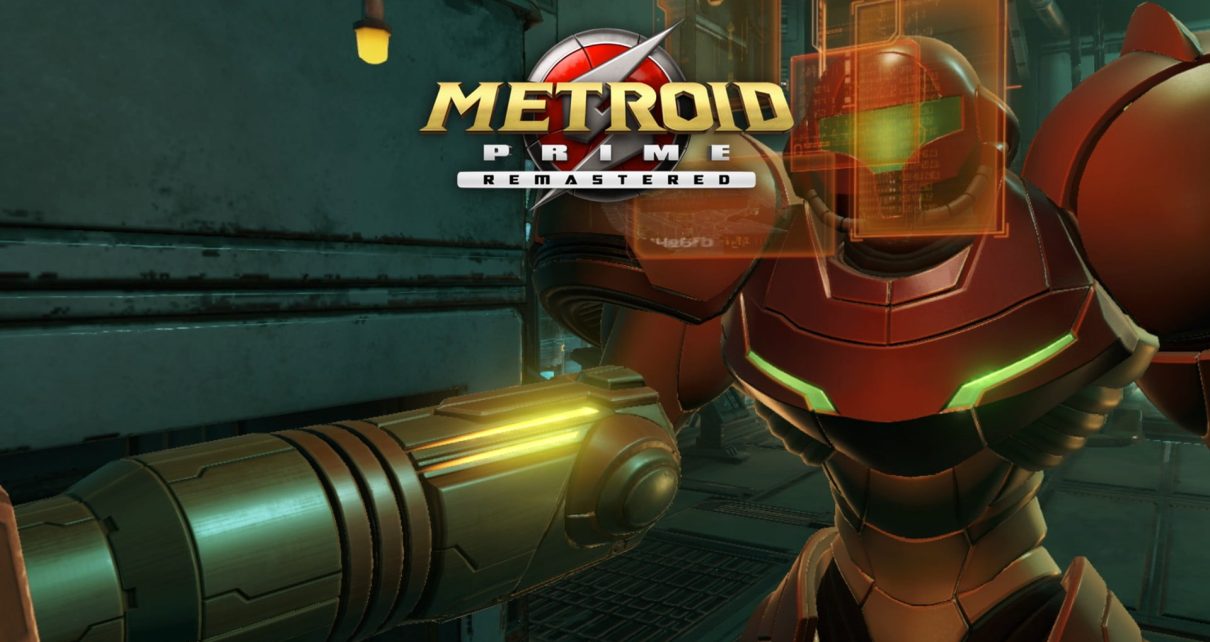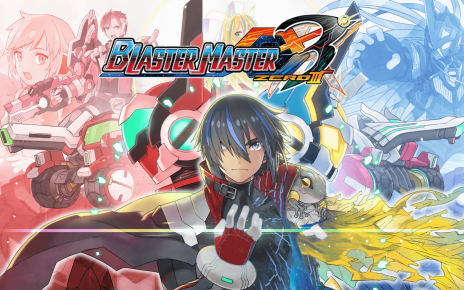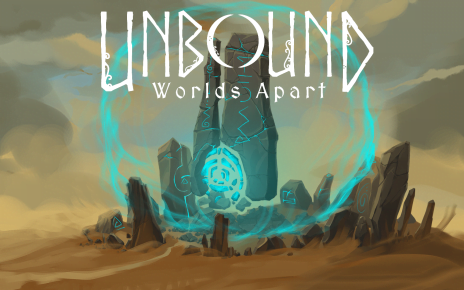Following the release of Metroid Dread, there has been rumor upon rumor of a Metroid Prime Collection or Remaster. Up until recently, this was just hearsay. Then Nintendo just shadow-drop the Metroid Prime Remastered out of nowhere during a Nintendo Direct.
First Verse, Same as the First
Metroid Prime Remastered starts as just about every Metroid in existence does. Samus Aran the intergalactic bounty hunter answers a distress call from a spaceship under attack from Space Pirates led by Samus’ nemesis Ridley. After a short time on the ship acting as a tutorial, you chase Ridley down to the planet Tallon IV.
Samus steps foot on the planet and after a brief walk around it becomes quite apparent that it’s no coincidence that the Space Pirates were here. What ensues is a little dive into the history of Samus, The Space Pirates, The Chozo Race, and of course the eponymous Metroid species.
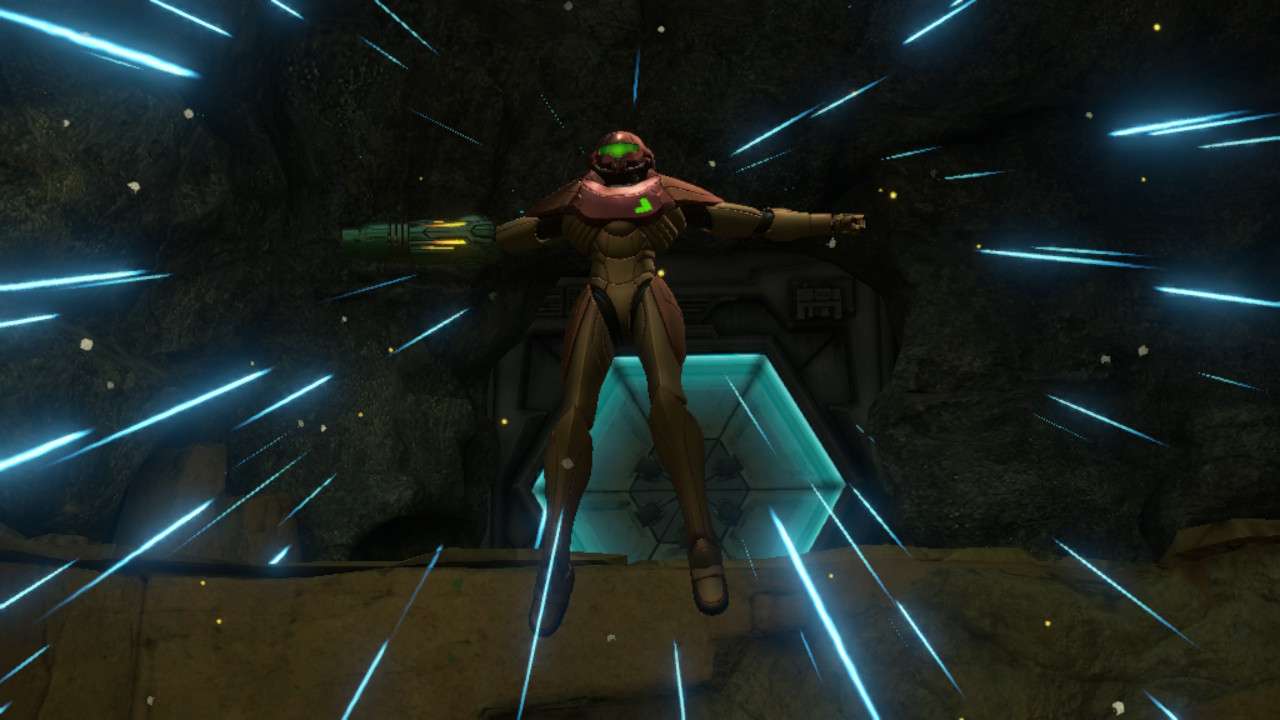
Now Metroid has never really been a series to bombard you with cinematics and lore and Metroid Prime Remastered is no exception. There are more cutscenes than seen in titles prior to the original release and tankers full of stuff you can scan to learn the grander scale of things but on the flip side, you don’t have to. It’s all completely optional and you’ll still get a fairly rewarding tale.
While Metroid does have quite an interesting story behind it and the rivalry between Samus and Ridley has become a thing of legend, the narrative has always been a little behind the scenes when compared to the actual gameplay. While the gameplay is distinct, in terms of story, Super Metroid and a large bulk of Metroid Prime feel like remakes of the original Metroid and this is one of the main reasons. It isn’t until you spend a little more time playing that you will notice the differences. Metroid Prime didn’t quite buck the trend but it started to take the series in a stronger direction when it came to story.
Metroid Prime Remastered follows the same narrative beats that in the original Metroid Prime, so don’t be expecting any extra story content or lore. For better or worse, this is the same narrative experience as it was originally released on the Nintendo GameCube and later on the Wii. I mean why mess with a classic, am I right?
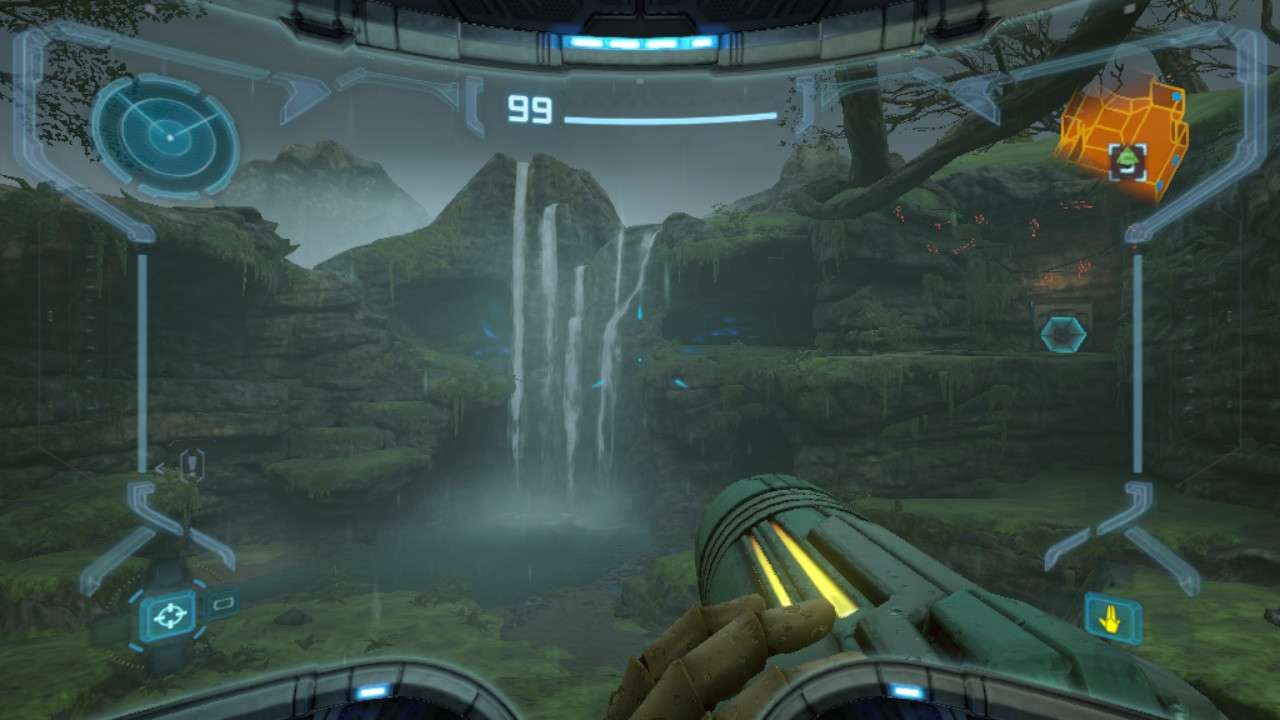
Purely a Matter of Perspective
Metroid Prime was the series’ first foray into the 3D world outside of Samus’ appearance in the N64 Super Smash Bros. While heavily expected to be a third-person adventure, the world was shocked and naturally apprehensive when it turned out that we would be going behind the eyes of Samus in a first-person shooter style of gameplay. At the time of its original release, the world was still in its original Boomer Shooter faze. Most people were hailing titles like Half-Life and Timesplitters as the best the genre had to offer and many fans were worried that the Metroid style of gameplay wouldn’t translate to the genre, especially on consoles. What instead happened was that Retro Studios created one of the most memorable gaming experiences of all time.
Metroid Prime fused the camera angle of first-person shooters with the exploration of the then-budding adventure sub-genre which would become “Metroidvania”. This created an amazingly immersive experience, not only from the presentation which I’ll touch on later, but the game as a whole just felt like this new experience at the time where you could see the cave depths, the true scale of things, and the pure intensity of battle. This was all while holding onto the backtracking and curiosity-triggering experience of the previous Metroid titles.
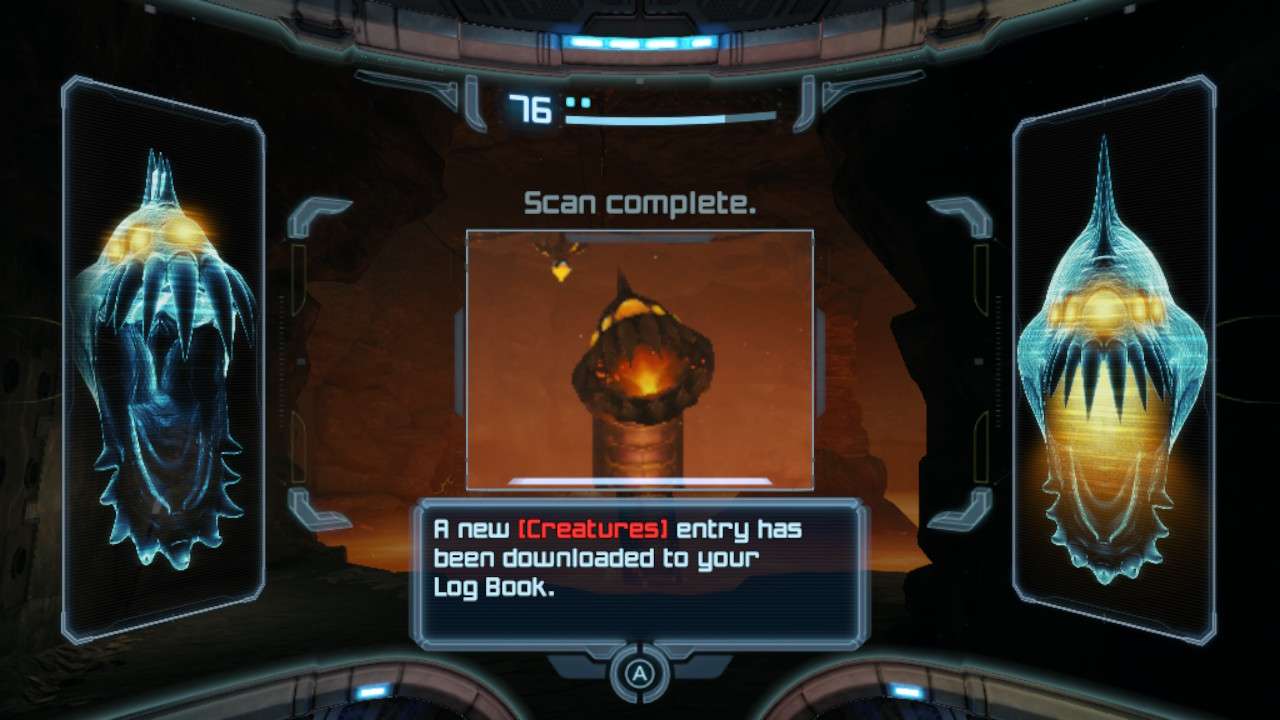
Exploring Talon IV
While the initial Space Station section is quite linear, soon you’ll be exploring the lush open plains of Talon IV and the various other biomes of the planet. You can experience the desolate and sand-consumed Chozo Ruins, the blistering heat of the Magmoor Caverns, and the bitter winter of the Phendrana Drifts. The areas are quite varied and feel so well-designed to the point that they could have easily been based on an actual location. We all know by now the “Metroidvania” genre is generally comprised of “rooms” which either have puzzles or items required to pass and Metroid Prime is no exception; the difference here is just how well they are designed. Metroid Prime’s ‘rooms’ feel more like one giant world waiting for you to explore and uncover its secrets.
As you slowly make progress through the world, taking the fight to the Space Pirates you’ll be using Samus’ visor a lot to scan many things. This is your main “interact” button and not only activates things but provides valuable intel on any of the planet’s flora or fauna that you aim at and hold the button down to do so. It’s not quite as simple as it sounds though. Scanning requires you to be near your target while leaving you completely defenseless. You are unable to fight back in “Scan” Mode.
The Scan Mode helps draw you into the world of Metroid and Talon IV. As you start to learn more and more about the locales and what drew the Space Pirates to the planet, you become more immersed. The fact it also helps you out by explaining how to tackle each enemy is also very handy. Unlocking gallery content depending on how much of the world you have scanned is just the digital cherry on top of this delicious cake.
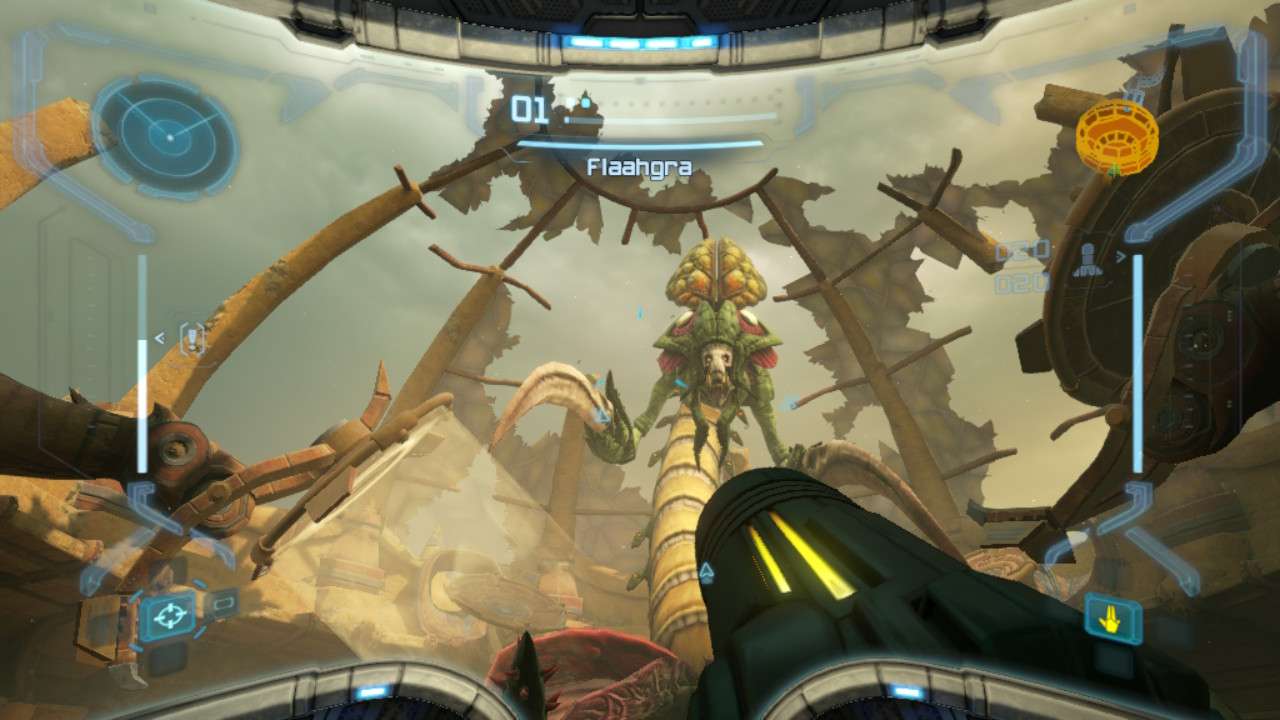
Fight or Flight
Of course, Samus has a gun arm and what fun would it be if the game just consisted of non-confrontational exploration with puzzle-solving and scanning? Yes, Samus is ready to throw hands and for the longest time, this was the best the series combat ever felt.
Samus is an Intergalactic Bounty Hunter so she’s quite handy with the cannon replacing one of her arms. Due to some fantastic controls, you’ll never feel like any death was cheap or unfair. You can lock on to any enemy and strafe or dodge, but as part of the many control options in the remastered version (more on this later), they have been tweaked in a way that it is fairly viable to play this much closer to other FPS games with free-aim. This is something that requires you to hold the button down in the original and comes at the expense of movement.
It’s also worth noting that the first-person perspective helps when it comes to the feeling of combat and diversity in enemies. They can come from anywhere. You can be shooting at a ground enemy while a birdlike creature swoops in to try and chip away at your health.
That said, the combat is still very much in-line with what came before it. Every foe has a distinct pattern that it won’t shy away from and each enemy has a specific weak point. Outside of the game’s outstanding collection of boss fights with both original and returning foes, the combat just doesn’t quite say engaging throughout. This is an issue that plagues the genre as a whole due to the amount of backtracking you’ll do. You’ll fight the same enemies over and over again as they tend to respawn each and every time you re-enter an area.
While the combat is a little more “urgent” than that of the previous games, don’t be expecting the parry fest that was presented in Metroid Dread. It’s a serviceable combat system with some of the series’ very best boss fights, but that doesn’t save it from the eventual mundane feeling that creeps in towards the latter half of the game. Yes, it introduces new enemies at a decent pace, but eventually, you’ll have seen all the combat on offer and you’ll see it often due to the backtracking.
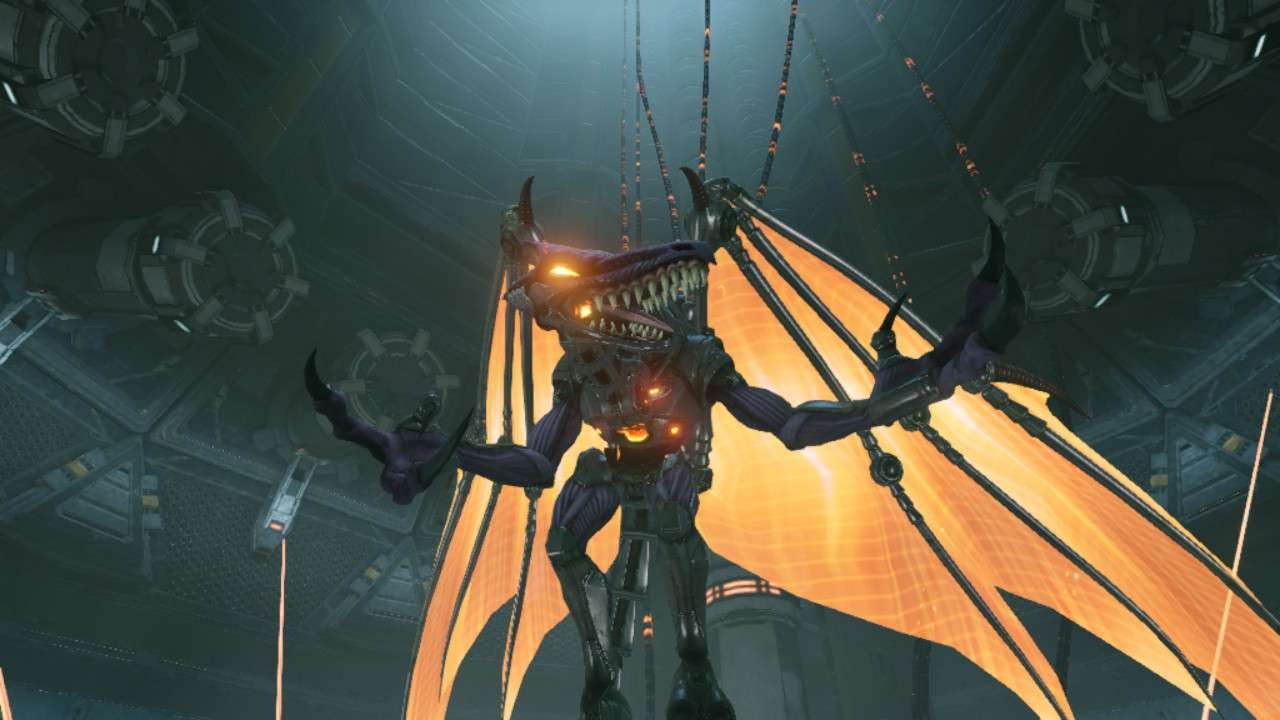
Back and Forth and Back Again
As you progress through Talon IV you’ll gain more combat abilities such as firing missiles or different beams, even eventually rediscovering the iconic “Ball” ability which sees Samus curling into a ball and dropping bombs. This formulates the bulk of your adventure as with each upgrade you can access new areas and progress further, not only into Talon IV but in the whole mystery of Metroid Prime. Outside of the abilities that you can unlock, there are also plenty of hidden Missile and Health items you can collect which are usually well hidden. These aren’t essential to progress but do give you that little edge and feel rewarding to find due to being locked behind environmental puzzles or tricky jumps.
You’ll be running, rolling, swinging, and rolling around the world of Talon IV through the game’s roughly 15-hour runtime, which hits a rather sweet spot within the genre. The controls in Metroid Prime Remastered allow this all to feel as natural and fluid as you’d like. You can opt for the original controls, or ones akin to more modern shooters. Playing the game handheld is an option, or if you play docked, there’s even an option to play with Motion Controls like the Wii or with Gyro Controls for those who have adapted to that thanks to Splatoon! The main takeaway from this is Retro Studios have catered to everyone and each control scheme feels just as viable as the others. There isn’t just “one” that stands head and shoulders above the others.
Again in terms of “Remastered” additions, this isn’t going to be for someone looking for a ton of new or cut content. Aside from extra concept art in the Gallery mode, a “hint” mode you can activate, and the controller tweaks, the game has a little less content than it originally had. The notable missing feature is that currently there is no way to unlock the “Fusion Suit” for Samus, which was made famous in Metroid Fusion. While it would be great if it was added in via a patch, this isn’t exactly a crippling omission of content. It’s just something worth noting for the more diehard of Chozo Nuts!
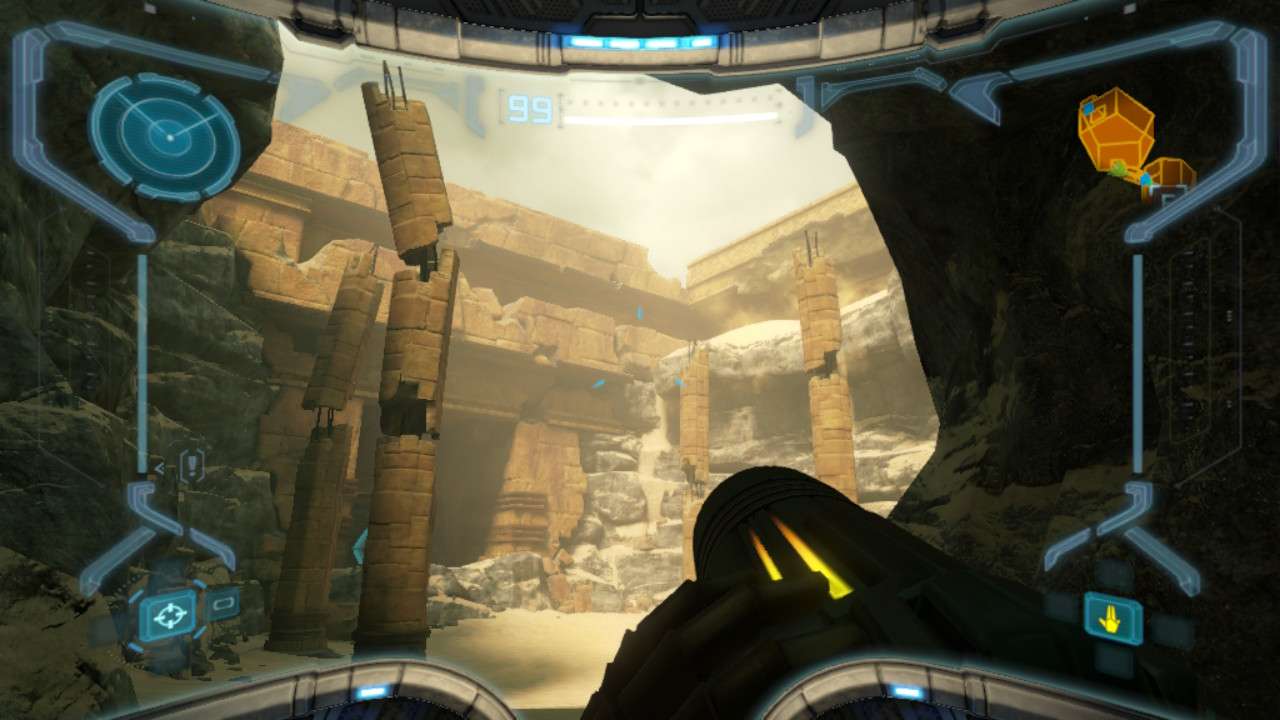
Prime Presentation
The presentation in Metroid Prime Remastered is where you see the most effort has gone into “remastering” the title and why the £34.99 or local equivalent price tag is completely acceptable. The game runs at a consistent 60FPS at all times both docked and handheld and no matter which way you choose to play the game you’re in for an absolute treat with the graphical overhaul the developers have given this title. It’s done in such a tasteful way that it has been improved, but it looks just as good as the nostalgia-tinted memories of those who played the original Gamecube release.
Every texture looks so clean this time around. The lighting has been altered to look even better and there are so many different lighting and particle effects going on that even as good as the previous titles looked, this is the undisputed visual giant of the Metroid series now. Yes, that means it has dethroned Metroid Dread. It’s that good a remaster in the terms of the visuals.
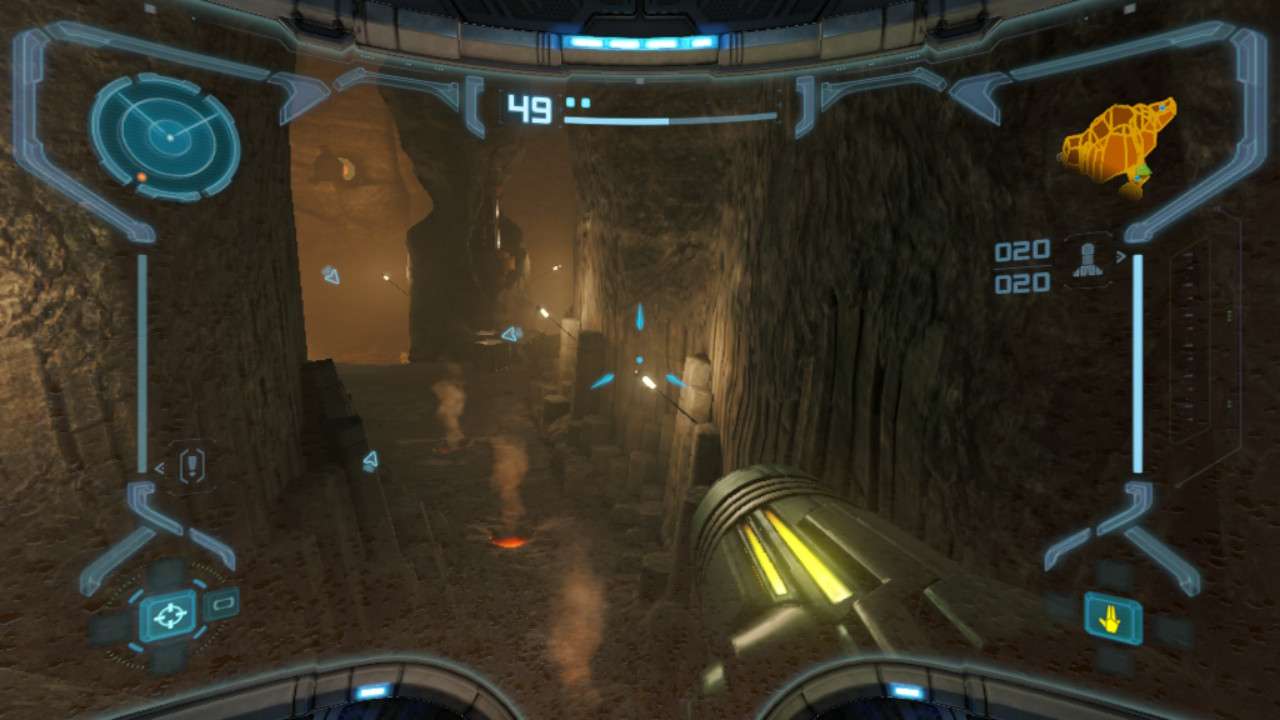
With the enhanced visuals and smooth performance, it’s just so easy to get absorbed into the atmosphere of Metroid Prime and Talon IV. Noticing the way water droplets react to your movement, seeing the reflection of Samus’ face on the visor, and just the amazing explosions are just some of the visual tricks that help you get fully immersed in the game. It just creates or for some, recreates memorable aspects of this legendary title.
The art direction is strong with Metroid Prime and was it always an absolute triumph when it came to recreating the Ridley Scott/H.R Giger-inspired visuals of the previous titles in a fully realized 3D world. There’s just that perfect mix of Sci-Fi conventions with video game tropes that Nintendo has become so adept at creating for their titles.
The audio in Metroid Prime Remastered has also been tweaked to be crisper and clearer. This works well through the small Nintendo Switch speakers but sounds absolutely perfect through larger speakers or headsets. Again, a plethora of ambient sounds and tunes make immersion inevitable. Warning alarms from your visor if you go to an area deemed too hot for your suit and the screams of alien life forms paired with the visuals create a truly unforgettable experience.
Aside from a few visual tweaks to cutscenes, there once again isn’t much in terms of adding content that wasn’t there. Instead, the team behind the remaster has focused on updating just about every aspect of the presentation to make the game look and feel like it’s a modern release. Honestly, if you didn’t know any better, you’d think this was a new and modern title.

Verdict
Metroid Prime Remastered is the gold standard when it comes to “Remasters”. It doesn’t add anything of significance, but it’s not a remake nor does it tout itself as one. Instead, it takes all the iconic aspects of the original title and makes sure they are of a standard that matches the current gaming standard.
The game remains to be a gritty, fun, and immersive experience. While the combat isn’t quite as good as the exploration, it still provides a must-play package not only for fans of the original but also for people who may have joined the series a little later. We can only hope that Metroid Prime 2 and 3 aren’t too far behind!
METROID PRIME REMASTERED IS HIGHLY RECOMMENDED

Purchase: Nintendo Store
If you would like to see more platformers, you may be interested in our review of Metroid Dread or Grim Guardians: Demon Purge.
Many thanks go to Nintendo for a Nintendo Switch review code for this title.
Pride of utopia & greatest thing ever, I found the One Piece, Collected the Dragon Balls & won the Mortal Kombat Tournament in one night, it was quiet for me that night! Follow me on Twitter @powahdunk

